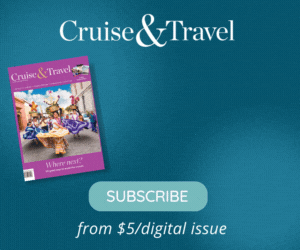Australia’s love affair with ocean cruising continued last year – albeit at a slower pace, with 1.35 million taking a holiday on the high seas.
The number represented an increase of just 0.9 per cent over the previous year, with Sydney’s continuing capacity problems blamed by industry leaders who pointed to much bigger growth figures in the rest of the world.
The growth numbers fell from 4.4 per cent in 2017, according to the latest figures from the Cruise Lines International Association (CLIA) released yesterday.

CLIA Managing Director Joel Katz said the development of new berthing facilities in Sydney remains the most urgent infrastructure priority for the cruise industry.
The lack of progress is likely to be costing NSW – and Australia – jobs and money. Carnival Australia president Sture Myrmell, chair of CLIA, said cruise currently provides 17,000 jobs, $1.4 billion in wages and $4.8 billion in economic benefits.
But despite the growth numbers, more Australians chose to go on a cruise holiday, with nearly one in 17 taking an ocean cruise – a penetration of 5.8 per cent of the population, the highest in the world. Australia is well ahead of the US at 4 per cent, 3 per cent in UK and 2.8 per cent in Germany.
Where did they go? The majority cruised in Australia, New Zealand and the South Pacific – but an increasing number chose fly-cruise particularly to Europe and the Mediterranean as the most popular long haul destinations.
A total of 467,000 cruised around Australia, 434,000 to South Pacific and 129,000 to New Zealand.
The Mediterranean attracted 74,000 passengers, Asia 72,000, Alaska 37,000, Northern Europe 35,000 and the Caribbean 28,000.
“The increasing number of Australians flying to ports overseas shows the market is still strong and holds great potential for the future.
“Cruising continues to be exceptionally popular among Australian travellers after many years of growth and world-leading market penetration,” said Mr Katz.
Growth is expected to pick up in 2020 as ports which are investing – Brisbane, with a new terminal, and Western Australia in Broome and elsewhere – receive more ship calls.
“The future outlook remains very positive,” Mr Katz says.
NSW accounted for 53 per cent of all Australian cruisers – down 2 per cent – as more people cruised from Queensland (22 per cent) and Victoria (13 per cent).
“Combined with the construction of a new international cruise terminal in Brisbane an other projects announced in Cairns, Eden and Broome this is expected to reignite growth in the Australian market,” he added.
Australians took shorter cruises of less than seven days around Australia and the South Pacific, up 10 per cent, but the majority took cruises of between 8-13 days which accounted for 39 per cent of the market.
The average age of Australian cruisers was 49 years of age but longer cruises to Northern Europe, Alaska, Transatlantic, world cruises and expedition destinations attracted an older crowd in their 60’s.








